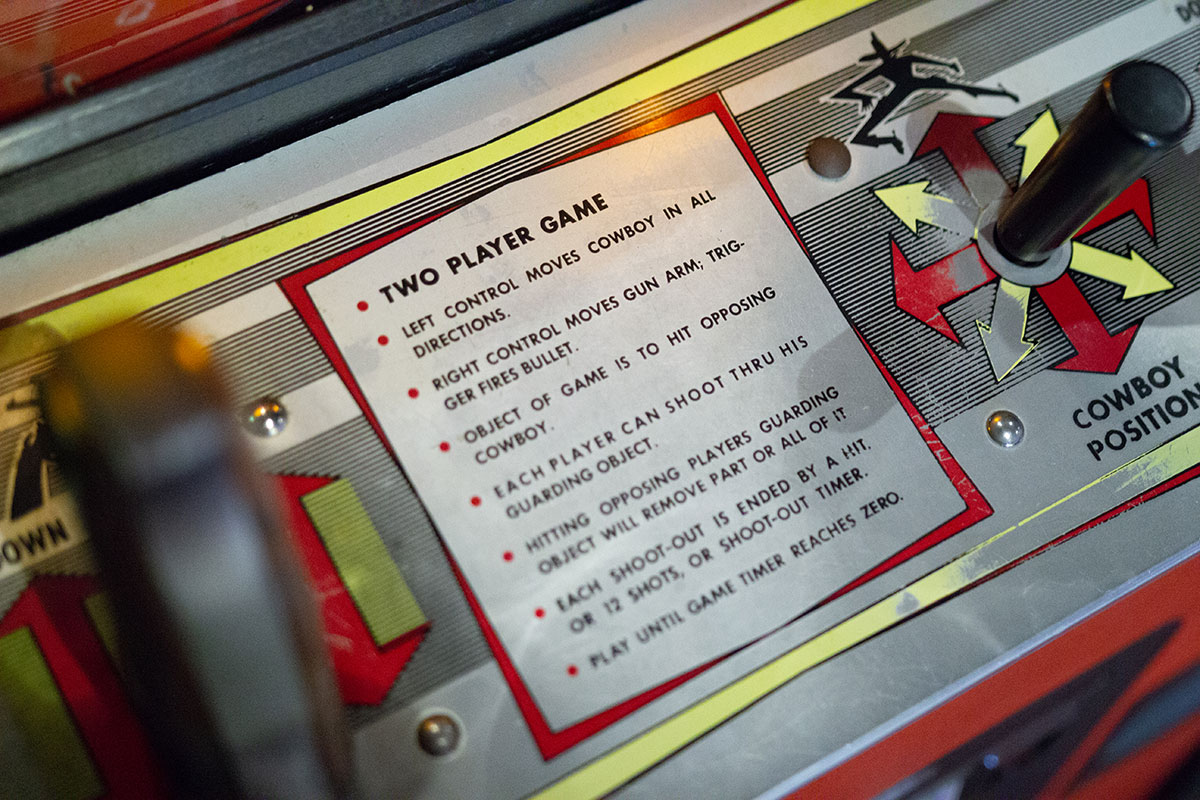
Date:
You can play one of the most historically significant video games right now at The Franklin Institute!
Gun Fight represents not only a turning point in video game history, but also in computer science history.
Gun Fight was released in the United States in November 1975 and, earlier that year in Japan and Europe as Western Gun. While Western Gun used simple integrated circuits, Gun Fight was the very first commercially available arcade game to use a microprocessor, the Intel 8080. That same chip would also power the blockbuster game Space Invaders.
So, what does that mean? A microprocessor is a computer processor that incorporates almost all of the main functions of a computer on a single integrated circuit. Before the microprocessor, computers were composed of sets of simple integrated circuits -- anywhere from tens of circuits to up to a quarter million! The original Pong game used 66 integrated circuits, and Western Gun probably used many more.
In computer history, Western Gun is part of the Third Generation of Computers, which relied on the invention of the integrated circuit. This era followed the First Generation, which utilized vacuum tubes, and the Second Generation, which incorporated transistors. The U.S. release of the very same game, under the name Gun Fight, is part of the Fourth Generation of Computers, based on the use of microprocessors.
Other Gun Fight/Western Gun Firsts:
- * First commercially available arcade game to feature to depict human-to-human combat and death (as well as depict a real gun)
- * First commercially available arcade game to feature game characters and fragments of story through its visual presentation, marking the beginning of cinematic elements in game
- * First commercially available arcade game to feature a short music tune
- * First commercially available “lawbreaking” arcade game
VIDEO GAME TECH GLOSSARY
Circuit
A circuit is the path or loop through which electricity flows. A very basic example of a circuit is a light switch. When the switch is on, the loop is closed and electricity flows through the light bulb. When the switch is off, the loop is broken (or “open”), and the electrical current doesn’t flow through the light bulb.
Transistor
A transistor is essentially a switch. It can turn electricity on or off, and it can amplify electrical current. If you want to create a simple circuit, such as a light switch, you don’t need a transistor, because the operator will manually flip the switch into either the on or off position. A transistor allows you to flip the switch using only a tiny amount of energy. Transistors can be very small, and are controlled electronically. A series of transistors can be used to build more complex machines than those possible with simple circuits. Imagine trying to control a machine by manually flipping dozens, hundreds or thousands of switches. Transistors, set up in various configurations, are essential building blocks for more complex electronic machines.
Integrated Circuits
An integrated circuit (or microchip) is one small piece of material that is composed many interconnected transistors, as well as resistors to limit the flow of electricity, and capacitors to store energy. Integrated circuits can be used for timers, counters, and to store data (“memory”) in a computer, among other things.
Read More: The Golden Age of Video Games in Game Masters: The Exhibition
Play Now: The Adventures of Benjamin Franklin

